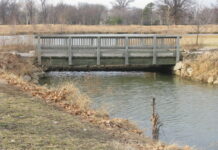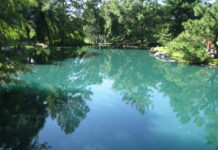Photo Credit: Global Diaspora News (www.GlobalDiasporaNews.com).
We know that the chemistry of wildfire smoke changes. The longer it’s in the atmosphere, the more the chemistry will be altered by ultraviolet light, but we still have a lot to learn.
Researchers have found that there seems to be a higher level of oxidation, so oxidants and free radicals are being generated the longer smoke is in the air. The specific health effects aren’t yet clear, but there’s some indication that more exposure leads to greater health effects.
The supposition is that more free radicals are generated the longer smoke is exposed to UV light, so there’s a greater potential for health harm. A lot of that, again, comes down to dose.
Chances are, if you’re a healthy individual, going for a bike ride or a hike in light haze won’t be a big deal, and your body will be able to recover.
If you’re doing that every day for a month in wildfire smoke, however, that raises more concerns. I’ve worked on studies with residents at Seeley Lake in Montana who were exposed to hazardous levels of PM2.5 from wildfire smoke for 49 days in 2017. We found a decrease in lung function a year later. No one was on oxygen, but there was a significant drop.
This is a relatively new area of research, and there’s still a lot we’re learning, especially with the increase in wildfire activity as the planet warms.
Source of original article: Ensia (ensia.com).
The content of this article does not necessarily reflect the views or opinion of Global Diaspora News (www.GlobalDiasporaNews.com).
To submit your press release: (https://www.GlobalDiasporaNews.com/pr).
To advertise on Global Diaspora News: (www.GlobalDiasporaNews.com/ads).
Sign up to Global Diaspora News newsletter: (https://www.GlobalDiasporaNews.com/newsletter/) to start receiving updates and opportunities directly in your email inbox for free.

































